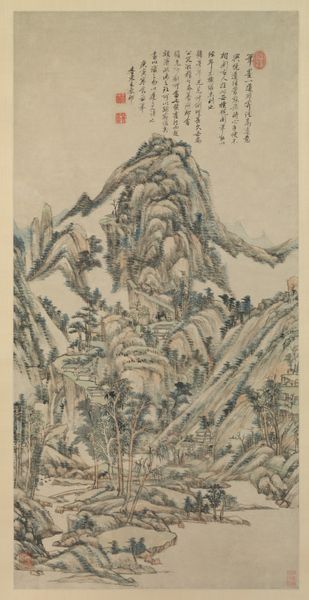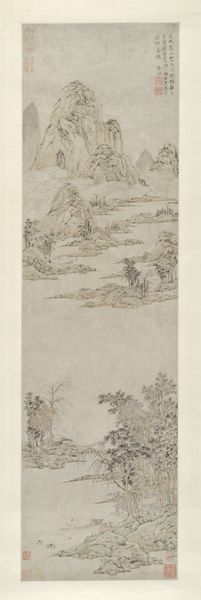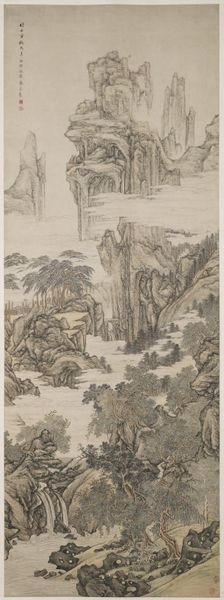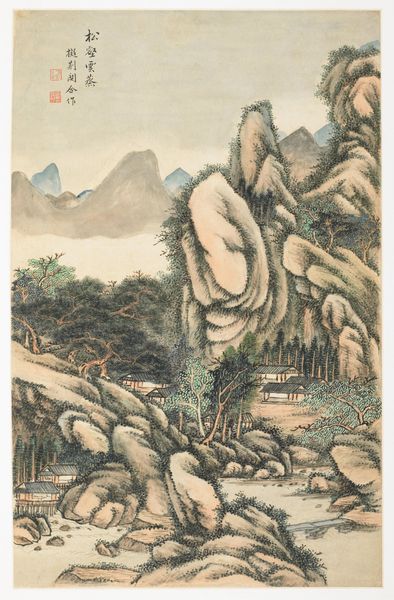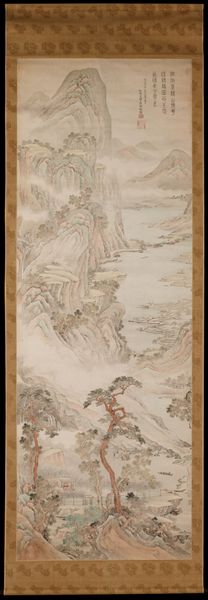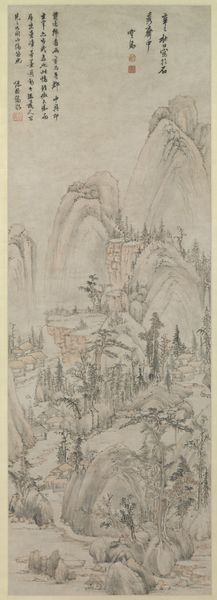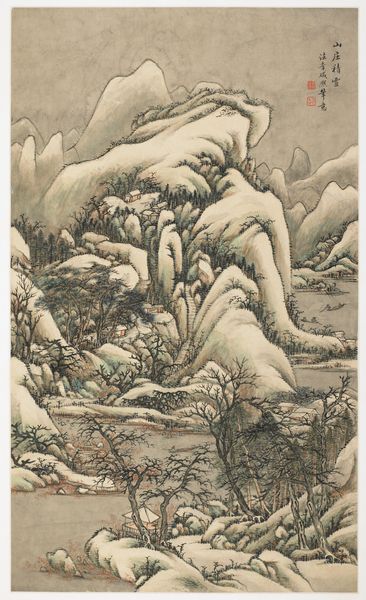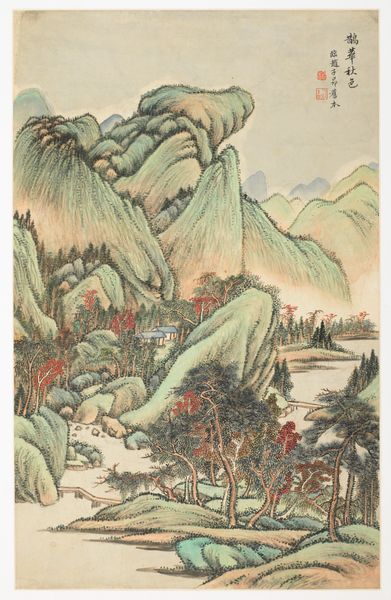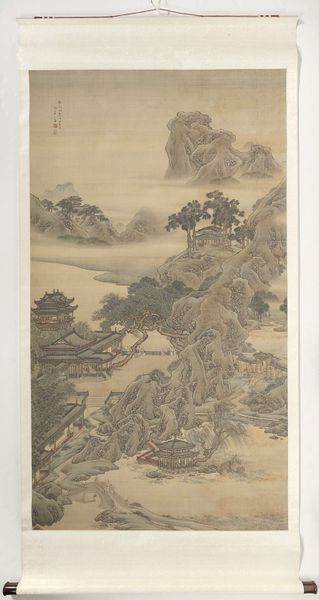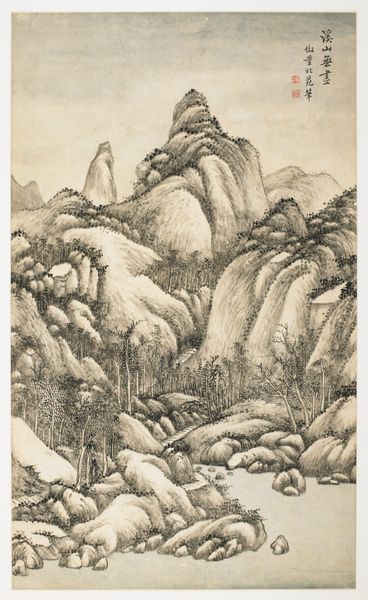
drawing, tempera, painting, paper, hanging-scroll, ink
#
drawing
#
ink painting
#
tempera
#
painting
#
asian-art
#
landscape
#
paper
#
hanging-scroll
#
ink
#
underpainting
#
china
#
calligraphy
Dimensions: 107 1/16 x 50 3/16 in. (271.9 x 127.5 cm)141 x 62 3/4 in. (358.14 x 159.39 cm) (mount)
Copyright: Public Domain
Wang Yu made this landscape scroll after Huang Gongwang around the mid-18th century, using ink and color on paper. At first glance, it might seem like a straightforward painting, but the choice of paper is quite significant. The fibrous nature of the paper support, combined with the absorbent quality, means that the ink bleeds ever so slightly, creating soft edges and atmospheric effects. This is no accident. The artist has deliberately worked with the material to achieve a sense of depth and distance, guiding our eye through the landscape. Think about the labor involved in preparing the paper, grinding the ink, and applying each brushstroke with precision. Wang Yu engaged with a rich tradition of ink painting. By attending to the materials and processes, we can appreciate the skill and artistry required to create such a delicate and evocative image, and challenge any separation of fine art and craft.
Comments
minneapolisinstituteofart almost 2 years ago
⋮
This monumental composition pays tribute to the famous Yuan dynasty scholar-painter Huang Gongwang (1269–1354). It is an attempt to combine two of Huang’s preferred compositional methods in one landscape. One of them is pingyuan, or “level-distance” perspective, defined as looking from a place in the foreground into the far distance across a flat landscape. The other is gaoyuan, or “high-distance,” in which the viewer is placed at the bottom of a grand mountain looking up toward the summit. The painting shows a panoramic level-distance view, allowing the viewer’s eye to be carried back into the depth of the composition through clearly marked stages. A rolling outline closes the high peaks in the background to demonstrate the “high distance.”
Join the conversation
Join millions of artists and users on Artera today and experience the ultimate creative platform.
